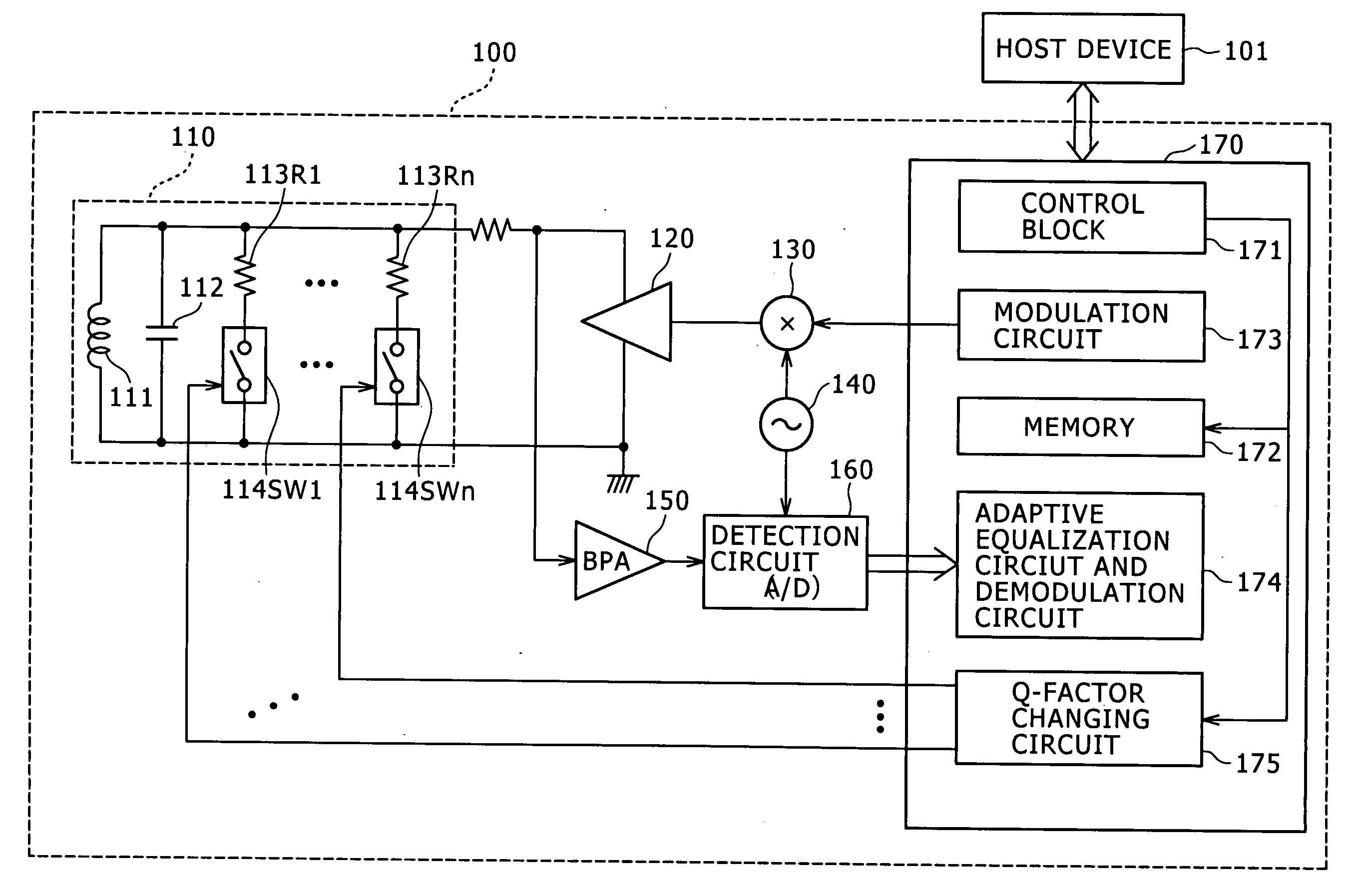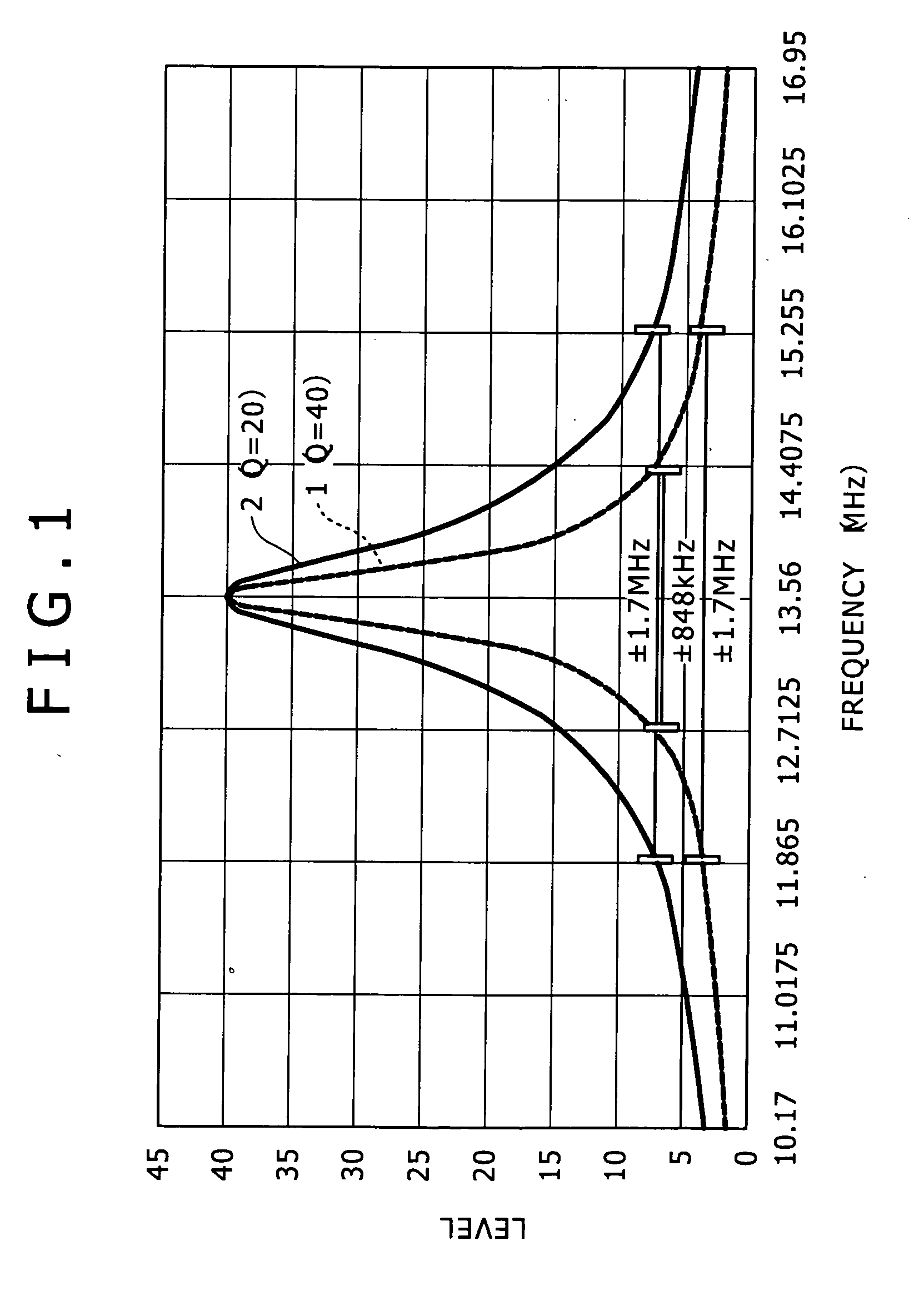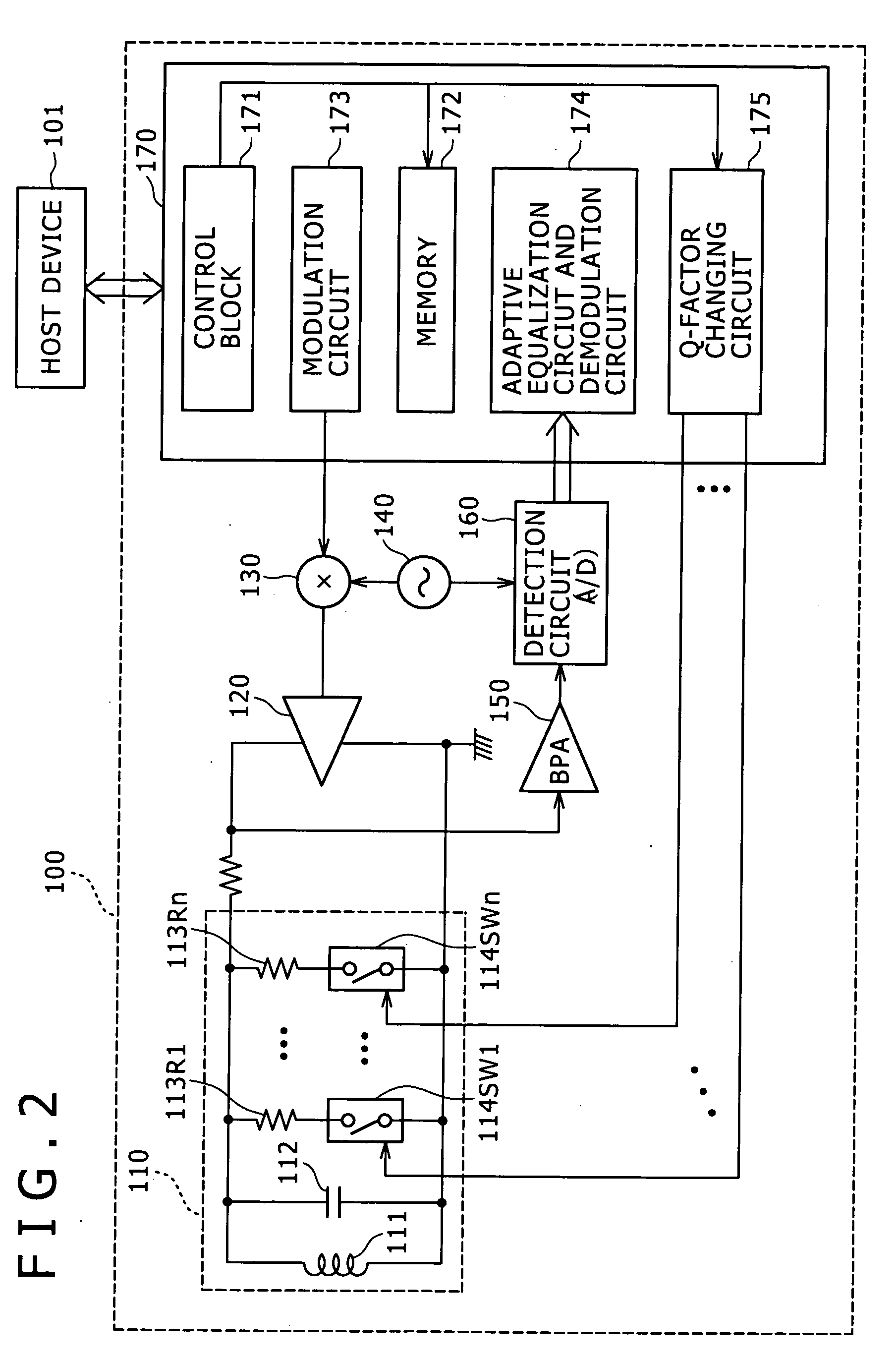Noncontact communication apparatus and noncontact communication method
a communication apparatus and non-contact technology, applied in the field of non-contact communication apparatus and non-contact communication method, can solve the problems of inability to perform stable data communication and try to adopt higher communication speed, and achieve the effect of demodulating the incoming signal more stably, without error, and high communication speed
- Summary
- Abstract
- Description
- Claims
- Application Information
AI Technical Summary
Benefits of technology
Problems solved by technology
Method used
Image
Examples
first embodiment
[0068]FIG. 2 is a block diagram showing a typical structure of a reader / writer 100. FIG. 3 is a block diagram indicating a typical structure of a transponder 200 composed of a noncontact IC card.
100>
[0069]The reader / writer 100 is made up of an antenna resonance circuit 110, a transmission amplifier 120, a mixer 130, a local oscillator 140, a band-pass amplifier 150, a detection circuit 160, and a signal processing section 170.
[0070]The reader / writer 100 is connected to a host device 101 via a USB (Universal Serial Bus) or an I2C bus. The host device 101 is constituted by a control device (e.g., CPU (central processing unit)) of an apparatus in which this reader / writer 100 is installed.
[0071]The antenna resonance circuit 110 of the reader / writer 100 is formed by an antenna coil 111, a resonance capacitor 112, as many as “n” resistors 113R1 through 113Rn, and as many as “n” switch circuits 114SW1 through 114SWn. The suffix of each of the “n” resistors 113R1 through 113Rn is serially c...
second embodiment
[0164]With the first embodiment discussed above, communication is performed between the reader / writer 100 and the transponder 200 under the protocol defined for FeliCa (registered trademark). Alternatively, the protocol for communication between the reader / writer 100 and the transponder 200 may illustratively be ISO14443-4 or NFCIP-1 Transport Protocol, among others.
[0165]ISO14443-4 or NFCIP-1 Transport Protocol includes specifications requiring communication speeds to be changed after negotiations are conducted at the communication speed in effect before the speed change between two communicating parties using a speed change command and a speed change response command. The second embodiment of the present invention involves having noncontact communication conducted according to ISO14443-4 or NFCIP-1 Transport Protocol.
[0166]With the second embodiment, the hardware structure of the reader / writer 100 may be identical to that of the first embodiment shown in FIG. 2. On the other hand,...
third embodiment
[0191]In the first and the second embodiments discussed above, the Q-factor of the antenna resonance circuit is reduced during high-speed communication. This allows high-speed communication to be conducted between the reader / writer 100 and the transponder 200 even when the antennas of the two parties are very close to each other. This type of communication has been difficult to achieve in ordinary setups. On the other hand, when the Q-factor is reduced, the maximum communicable distance is inevitably shortened.
[0192]If the inter-antenna distance is sufficiently long for communication between a given reader / writer 100 and the transponder 200, data exchange between the two parties is made available without the Q-factor being set to be smaller than in ordinary setups. In such a case, if the Q-factor is reduced based on the communication speed information alone as with the first and the second embodiments, there may arise a trade-off between the availability of the communication over a ...
PUM
 Login to View More
Login to View More Abstract
Description
Claims
Application Information
 Login to View More
Login to View More - R&D
- Intellectual Property
- Life Sciences
- Materials
- Tech Scout
- Unparalleled Data Quality
- Higher Quality Content
- 60% Fewer Hallucinations
Browse by: Latest US Patents, China's latest patents, Technical Efficacy Thesaurus, Application Domain, Technology Topic, Popular Technical Reports.
© 2025 PatSnap. All rights reserved.Legal|Privacy policy|Modern Slavery Act Transparency Statement|Sitemap|About US| Contact US: help@patsnap.com



